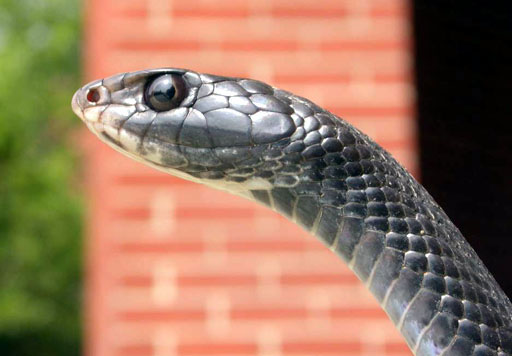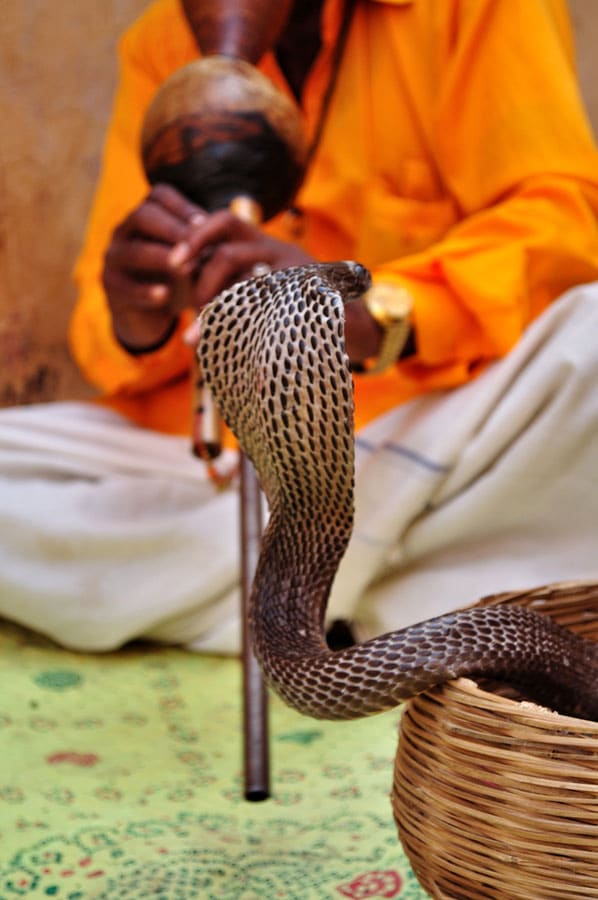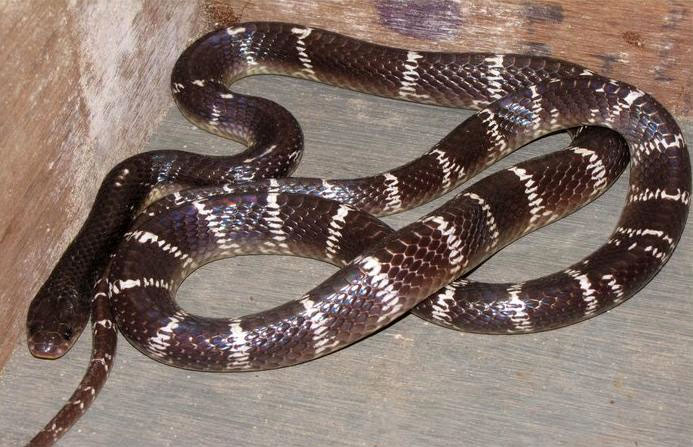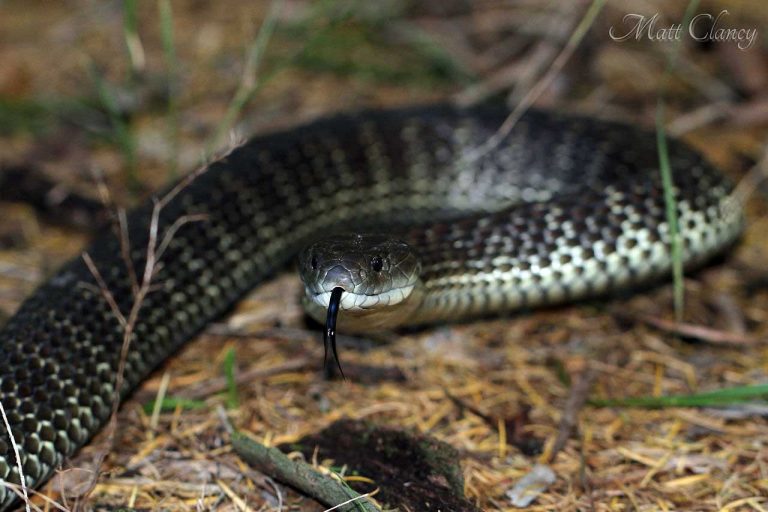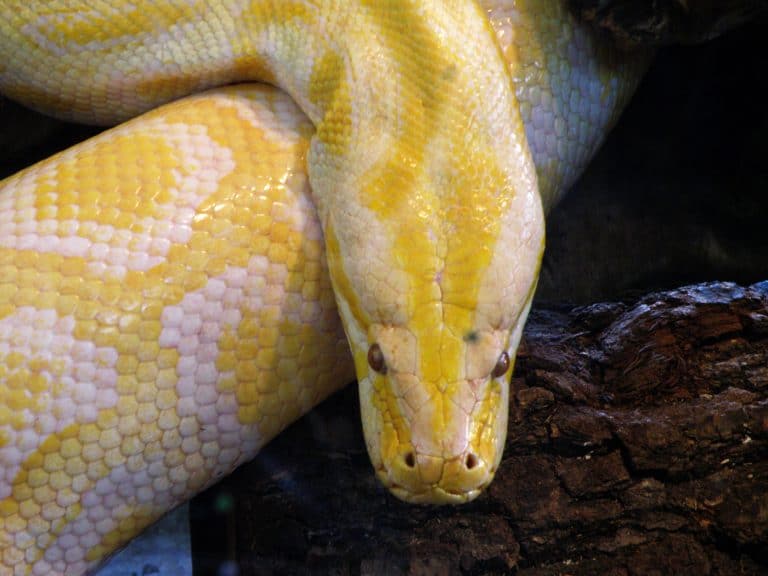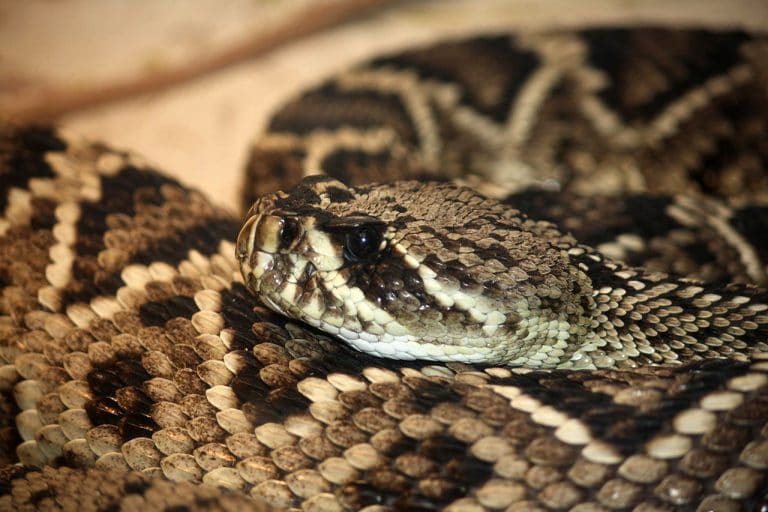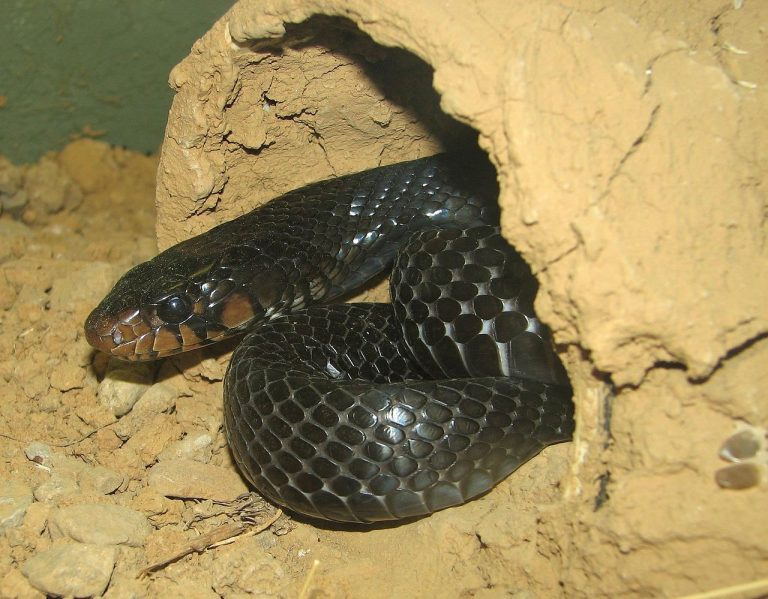Black Racer Snake
Scientific Classification
| Kingdom: | Animalia |
| Phylum: | Chordata |
| Subphylum: | Vertebrata |
| Class: | Reptilia |
| Order: | Squamata |
| Suborder: | Serpentes |
| Family: | Colubridae |
| Subfamily: | Colubrinae |
| Genus: | Coluber |
| Species: | C. constrictor |
| Binomial name: | Coluber constrictor |
Of the two varieties of snakes that grow up to 5 feet long, you have the black racer snake and the black rat snake. The black racer snake has a uniformly colored black upper body, is slim, and has a white chin.
The Black Racer or Black Snake is a non-venomous snake hailing from the eastern provinces of the United States. This snake is good at climbing and many a times it climbs the top of trees hunting for birds. Besides birds, it eats lizards, insects, frogs and rodents. Hobbyists rarely adopt this snake as a pet.
The black racer snake, called Coluber constrictor Priapus, is a familiar venom-less snake belongs to the South of the United States. The peculiar nature of this snake is that it is agile in daytime. In addition, being agile at day time, makes them a very quick creature.
They say that black racers are color blind. The adult snakes grow to a length of nearly 55 inches (the greatest length acquired is almost 70 inches). Yearly once it sheds its skin.
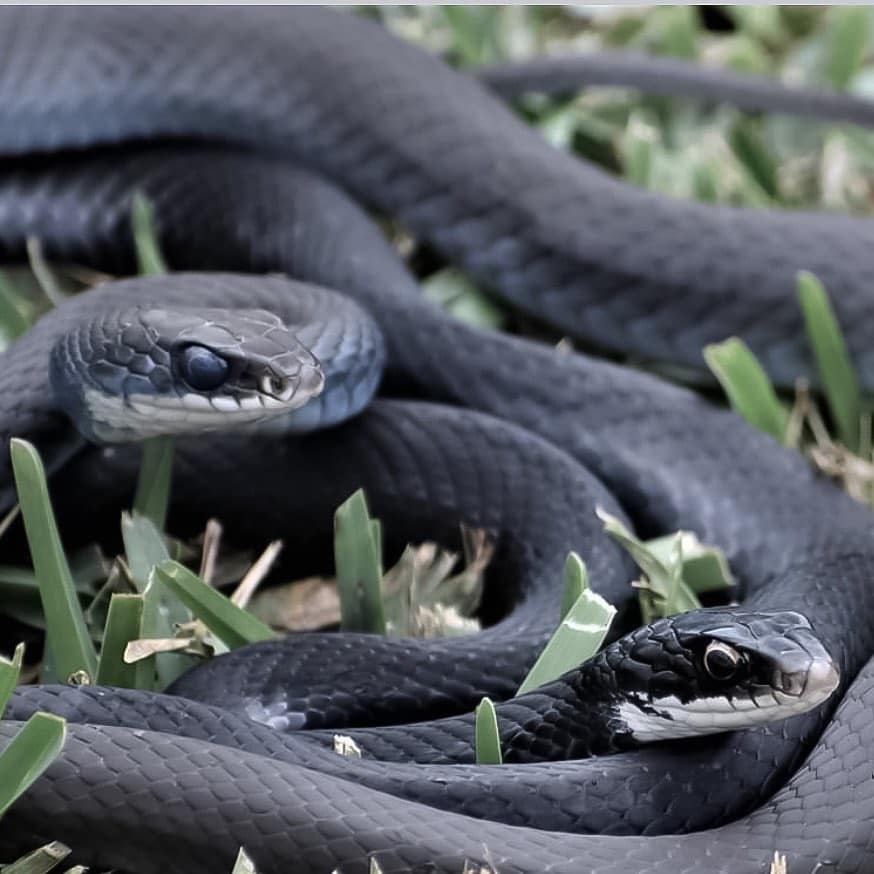
Anatomy
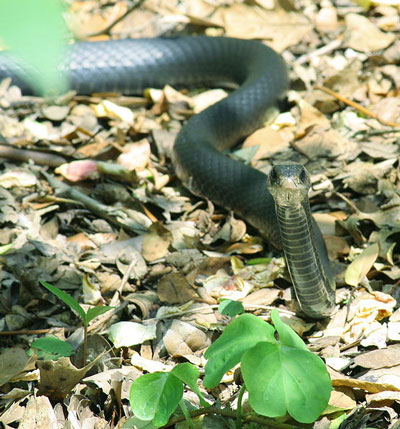
Its scales are smooth and the eyes are quite big. The grown up racers are taken for granted as black rat snakes. (These usually exist in the Mountains and Piedmont areas). Or other similar big black snakes existing in that province like the Black Kingsnakes, Black-Phase Eastern Hognose Snake or Dark Coachwhips. Even then, black racer snakes are usually lean and colored homogeneously black when compared to the others. In addition, these racer snakes do not have noses that are upside down like the keeled snake, Hognose Snakes and the like
Behavior
The practices and manners of the Black Racer snake are extremely exclusive. These snakes are very good at swimming and also climbing, in addition to which, they go about unbelievably at great speed (because of which they obtained the name ‘racer’). Even though they are nonpoisonous, the Racer Snake bites its prey when they corner them. Usually, Black racer snakes select to get away after a confrontation, but there are still instances when the snake chases its prey. That is why the Black Racer Snake is considered an aggressive as well as a homely snake.
The Black Racer Snakes prefer to hide at night time and emerge at daytime. Being extremely quick, their finest way of defending themselves is to get away. As time passes, they possibly reconcile to a certain extent, yet they slip away while interacting with humans and attempt their best to flee.
Habitat
We come across the Black racer snake all over the eastern provinces of the U.S., ranging from the Florida Keys to the south regions of Maine. In the Central parts of the U.S. and in the provinces in the West you can find the other subordinate variety like the yellow-bellied racers. We also come across the Racers in Georgia and Southern Carolina and they exist along with the majority of regular snakes in almost all the habitations.
As a Pet
Breeding
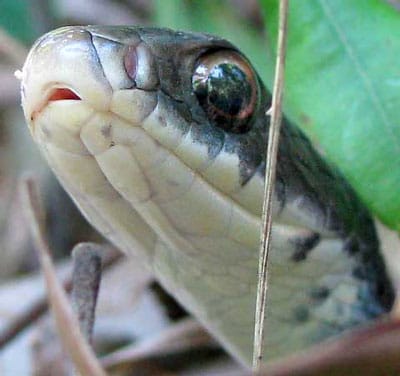
The laying of eggs and breeding generally takes place in the months of spring and in the summer. Every snake can lay as many as 20 eggs. Similar to the other kinds of reptiles the Racer Snakes never feed the hatchlings, or nurture them. When they emerge, they are six inches long and they depend on their disguise for their primary period of existence. The young Racer Snakes do not resemble their elders at all. At birth itself, they have a number of white and black spots. In the course of their growth these spots unite and gets darker.
Housing
A meager space is sufficient for the baby racer snake, but while growing, they need still more room. In general, the size of the terrarium needed for the snake is two-thirds of its full length. Most of the time, the snake is on the ground, as such, a tank with a width more than the height is ideal.
Keep any type of substrate; usually they are newspaper or shavings of aspen. The oils, emerging from the pine are poisonous to the snakes; so, avoid them. Facilitate your terrarium with one extreme end cool (70F – 75F) and one extreme hot end (80F – 85F). Never let the temperature fall less than 70F or rise more than 90F. Provide a hideout at each extreme as a comfort zone for your snake. In the unfortunate absence of sufficient space to hide, these snakes develop stress and issues related to its health and face a reduction of its natural life.
The racer snakes dwells in partially humid and warm surroundings, hence house them in an enclosure that simulates the above. Maintain the humidity to a high of 70% and low of 50%, at the time of shedding, for a period of one week.. In addition, place a bowl of water, sufficiently big enough for your snake to coil in it. This water sustains the humidity in the cage and helps it to survive.
Food
Principally, the Black Racer snakes consume animals not as big as they are, like moles, lizards, birds, insects, rodents, small snakes, and mostly frogs. For the purpose of consuming its prey, the snake chokes up the prey and squashes it to the floor (similar to the majority of constrictors that wind round their particular victim). Generally, when the Black Racer Snakes hunt, they attack their victim very fast in water bodies or in grassy locations. Normally, these snakes select a site cautiously. The Black Racer Snakes are voracious eaters when compared to other varieties of snakes. This looks like a bad behavior, but it is not so. It is believed that the black racer snakes are good gardeners in the suburban areas, because they consume creatures harmful to the garden.
Handling
Never handle a Racer Snake immediately after it has taken food as this will make it to cast out the intake. Therefore, handle them only two days following a feed. According to the enclosure’s temperature and the prey size, the complete process of digestion of its prey lingers up to 10 days.

Having discovered a fondness for insects while pursuing her degree in Biology, Randi Jones was quite bugged to know that people usually dismissed these little creatures as “creepy-crawlies”.

